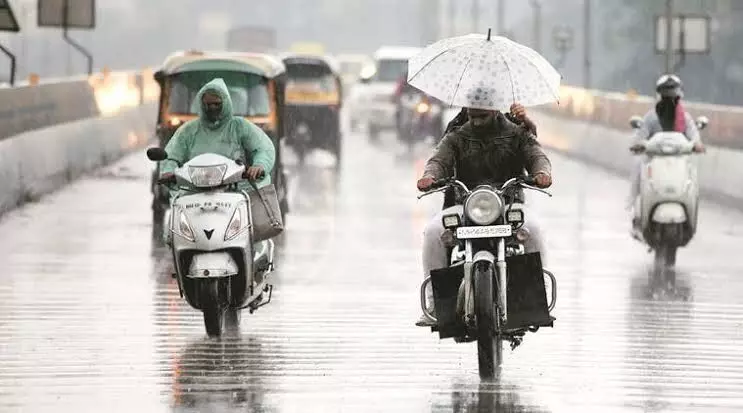El Nino conditions to develop during the monsoon season: IMD
MeT says not all El Nino years are bad monsoon years and that 40 per cent of the El Nino years in the past (1951-2022) received normal to above-normal monsoon rainfall
By Newsmeter Network
New Delhi: The country can expect normal rainfall during the southwest monsoon season as a positive Indian Ocean Dipole (IOD) and a lower snow cover over the northern hemisphere are likely to counter the evolving El Nino conditions, the India Meteorological Department (IMD) said on Tuesday.
This forecast comes as a relief for the agricultural sector, which heavily relies on monsoon rains for crop production.
"India to see normal rainfall during the southwest monsoon season (from June to September). It is likely to be 96 per cent (with an error margin of 5 per cent) of the long-period average of roughly 87 cm," M Ravichandran, Secretary, Ministry of Earth Sciences, told a press conference.
There is a 67-per cent probability of normal to above-normal rainfall, said M Mohapatra, Director General of Meteorology, IMD. He said the snow-covered area over the northern hemisphere and Eurasia was below normal from December 2022 to March 2023.
A lower snow cover over the northern hemisphere is considered favourable for the subsequent southwest monsoon rainfall over India.
"If at all there is any adverse impact due to the evolving El Nino conditions during the monsoon season, it is likely to be countered by the favourable impact of a positive IOD and the lower snow cover over the northern hemisphere," Mohapatra said.
Normal rains since 2019
Starting 2019, India has witnessed four consecutive years of normal and above-normal rains during the monsoon season.
Mohapatra said normal to below-normal rainfall is predicted over parts of northwest India, west-central and northeast regions during the southwest monsoon season. "Normal rainfall is likely over many parts of the peninsular region, adjoining the east-central, east, northeast areas and some parts of northwest India," he said.
El Nino conditions to develop
The Met department head said El Nino conditions are likely to develop during the monsoon season and its impact may be felt in the second half.
He, however, added that not all El Nino years are bad monsoon years and that 40 per cent of the El Nino years in the past (1951-2022) received normal to above-normal monsoon rainfall.
Senior meteorologists said positive IOD conditions are likely to develop during the southwest monsoon season. El Nino, which is the warming of the waters of the Pacific Ocean near South America, is associated with weakening of monsoon winds and less rainfall in India.
The IOD is defined by the difference in the sea surface temperatures between the western parts of the Indian Ocean near Africa and the eastern parts of the ocean near Indonesia. A positive IOD is considered good for the Indian monsoon.
Rainfall statistics
India received 971.8 mm of rainfall in the monsoon season in 2019, 961.4 mm in 2020, 874.5 mm in 2021 and 924.8 mm in 2022, according to the IMD's data. The country recorded 804.1 mm of precipitation in the season in 2018, 845.9 mm in 2017, 864.4 mm in 2016 and 765.8 mm in 2015.
Rainfed agriculture is a critical component of India's agricultural landscape, with 52 per cent of the net cultivated area relying on this method. This practice accounts for about 40 per cent of the country's total food production, making it a crucial contributor to India's food security and economic stability.
Unseasonal rains
Unseasonal rains and hailstorms in March damaged rabi crops in large parts of the country, causing losses to thousands of farmers. The government, however, said wheat production was not impacted due to the unseasonal rains.
An early onslaught of heatwaves had impacted wheat production in India last year, prompting the country, the world's second-largest wheat producer, to ban wheat exports in May.
In March this year, the government said the export ban on wheat will continue as long as the country does not feel comfortable with the domestic supplies to meet its food security needs
Inputs from PTI